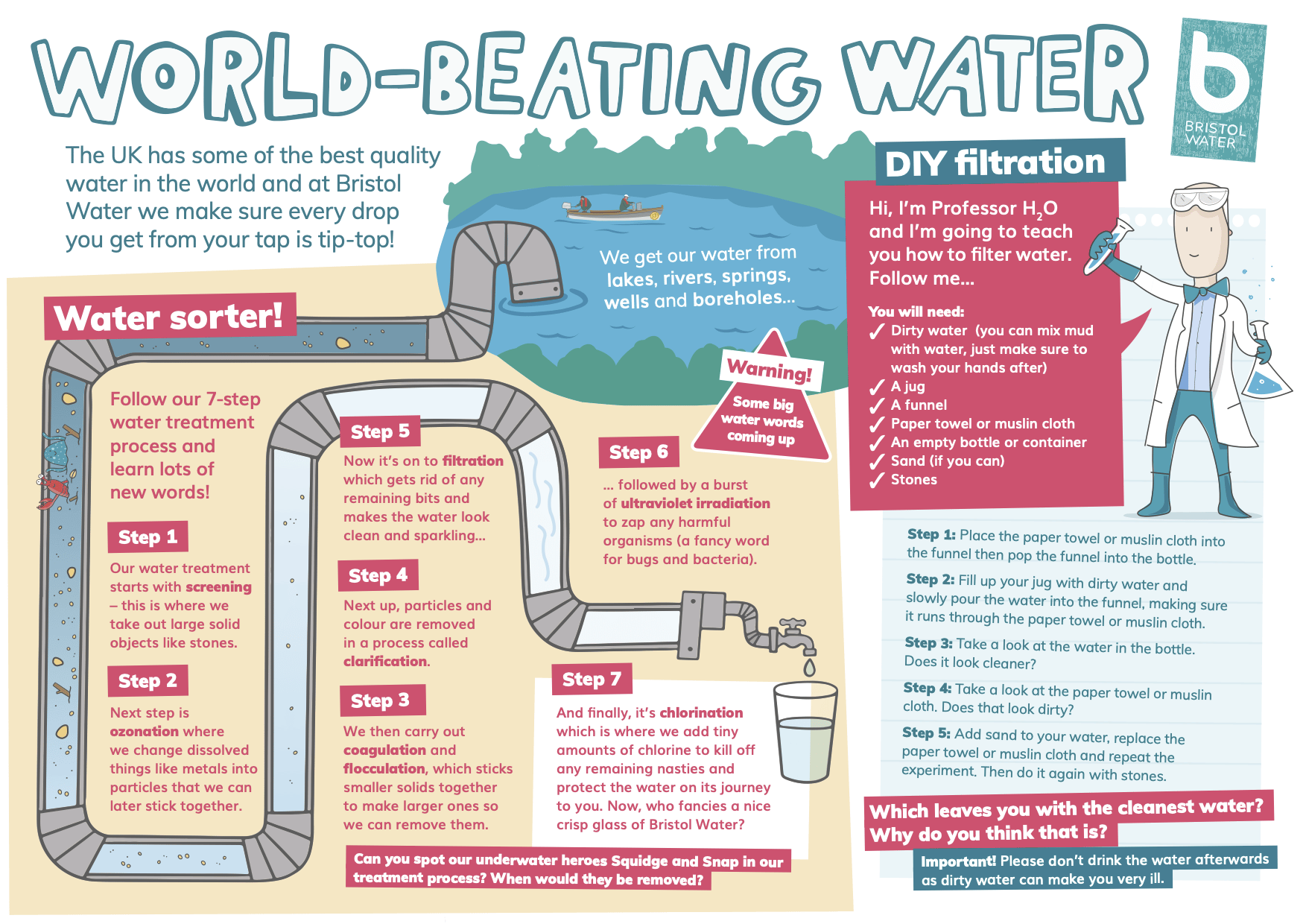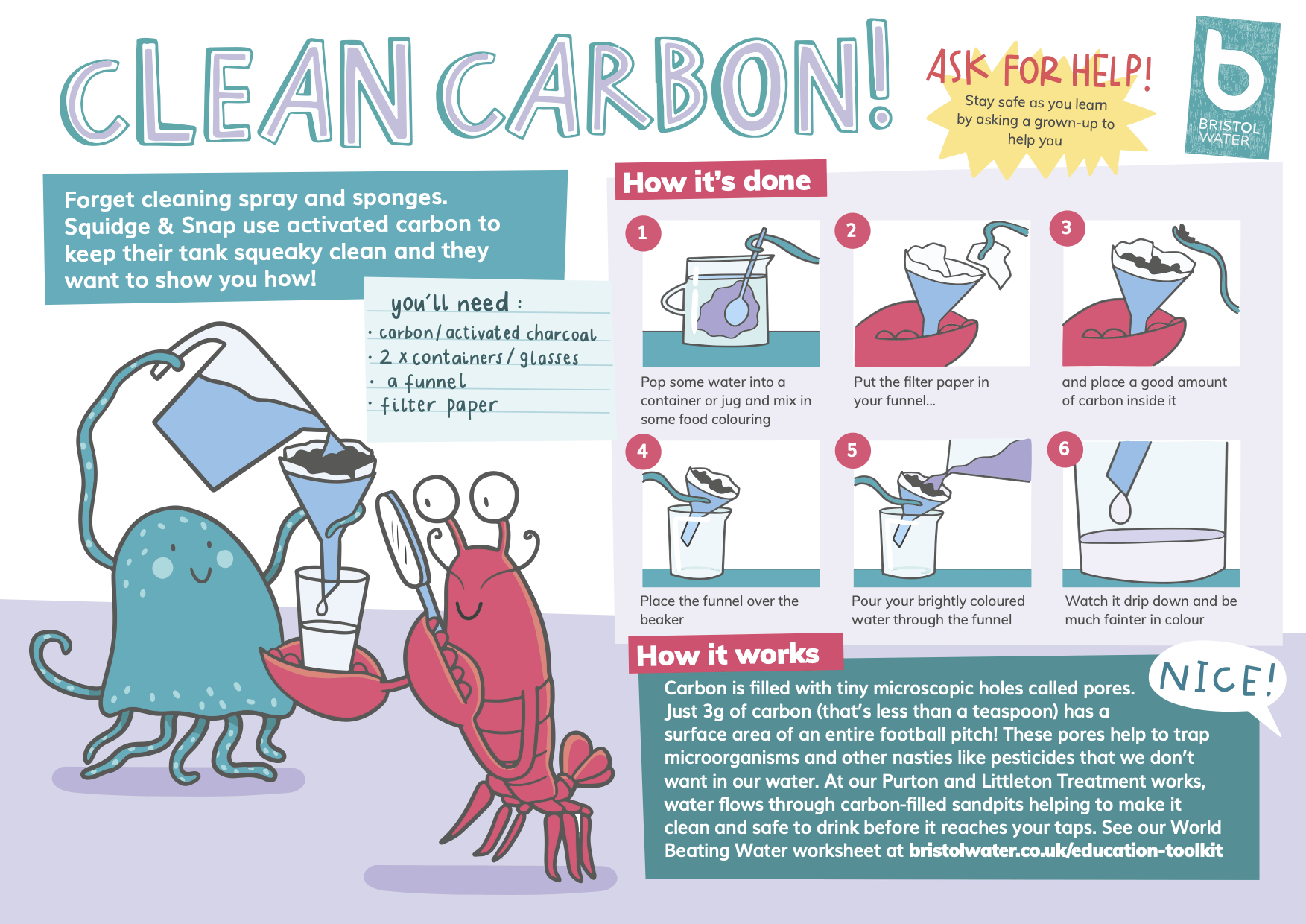Wicked Water Treatment
You’ve been drinking the same water which has flown through rivers, clouds and dinosaurs...
Cleaning water
Before you drink, we make it sparkly and clean. We have some of the very best drinking water in the world thanks to all our nifty wicked water treatment delights.
This section is suitable for KS2, but our water treatment worksheet is maybe a little technical and suits older pupils too.
Why do we clean water?

We use wicked water treatment magic before it enters your taps to take out the nasties from rivers – think bacteria, viruses, parasites and pollution. Take a look at the rainbow dancing water video below. This shows how nasty stuff like pesticides can leak into our rivers.
How do we clean water?
There’s lots of methods for cleaning water. This includes fancy things like:
Filtration
We use wicked things like activated carbon in water treatment – which has a surface area of a football pitch in just 3g of the stuff! Which cleans it as it passes through.
Coagulation
This is a very fancy word, which is basically makes particles in the water bind together. This makes nasties easier to remove, as it makes them heavier so they sink to the bottom
Chemicals
Like chlorine, which we add in teeny tiny amounts to keep it safe as it reaches your tap. It’s been used for over 100 years in water treatment.
Disinfection
Like ultraviolet light which zaps the nasties in the water.
So before wicked water treatment, where does our water come from?
Great question! Probably not where you think. Much of our water in Bristol and Somerset starts its journey in Wales.
The water enjoys the beautiful Welsh countryside and meanders on down the river until it reaches the River Severn. We then take this water from the Sharpness and Gloucester canal.
But this isn’t the only way we get water! In fact, we get it from all over the place – including under the ground!
Unsure on what the water cycle is? Not to worry, simply head on over to our wicked water cycle page.
Resources
You can download all of our resources on the left hand side. of this page.
Video – Rainbow Dancing Water
In this experiment, you’ll see that food colouring travels from the one glass into the other via paper towels, which makes the water all rainbow-y and fun. This is a great example for how pollution like fertilisers for crops can spread through soil and into rivers and streams:
Video – Cool cleaning carbon
See how carbon can clean food colouring from water.

Resource downloads
Worksheets, experiments and videos
Experiment
Experiment
Video
Video